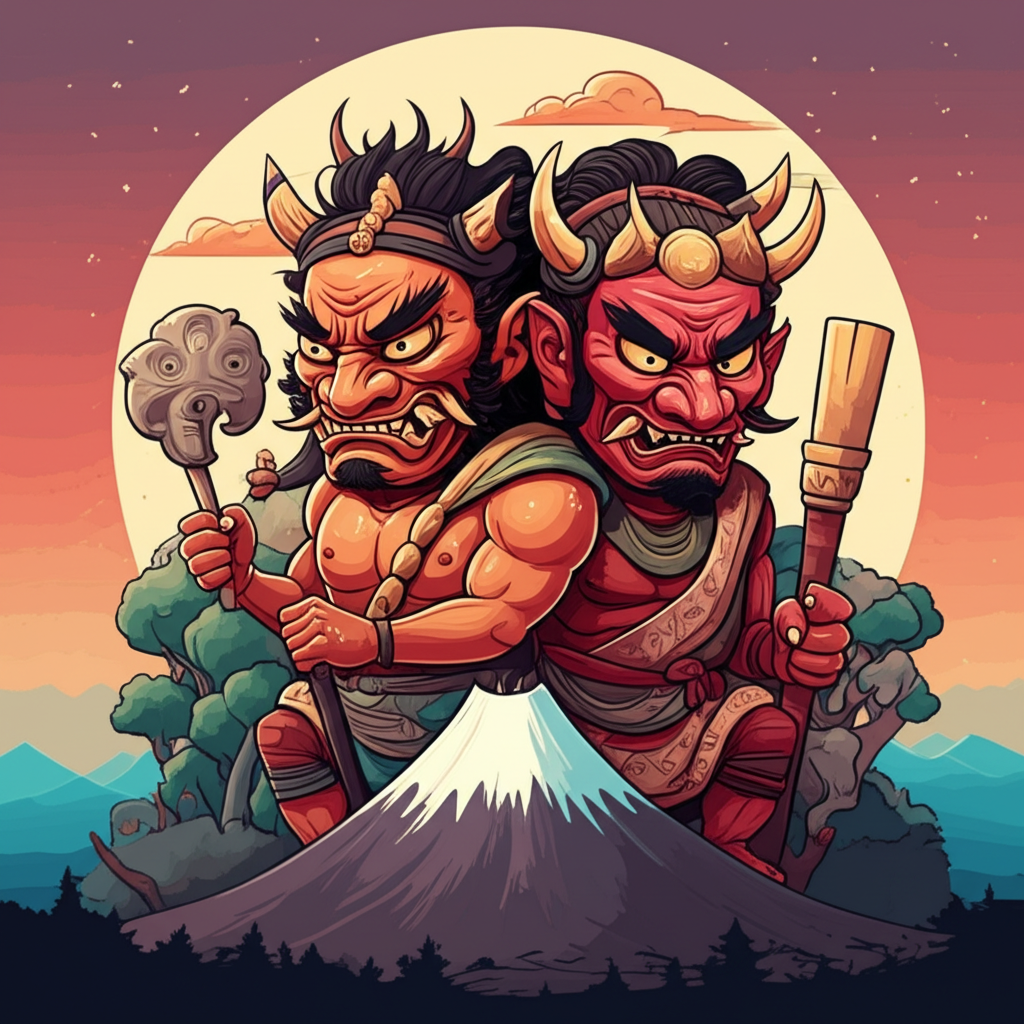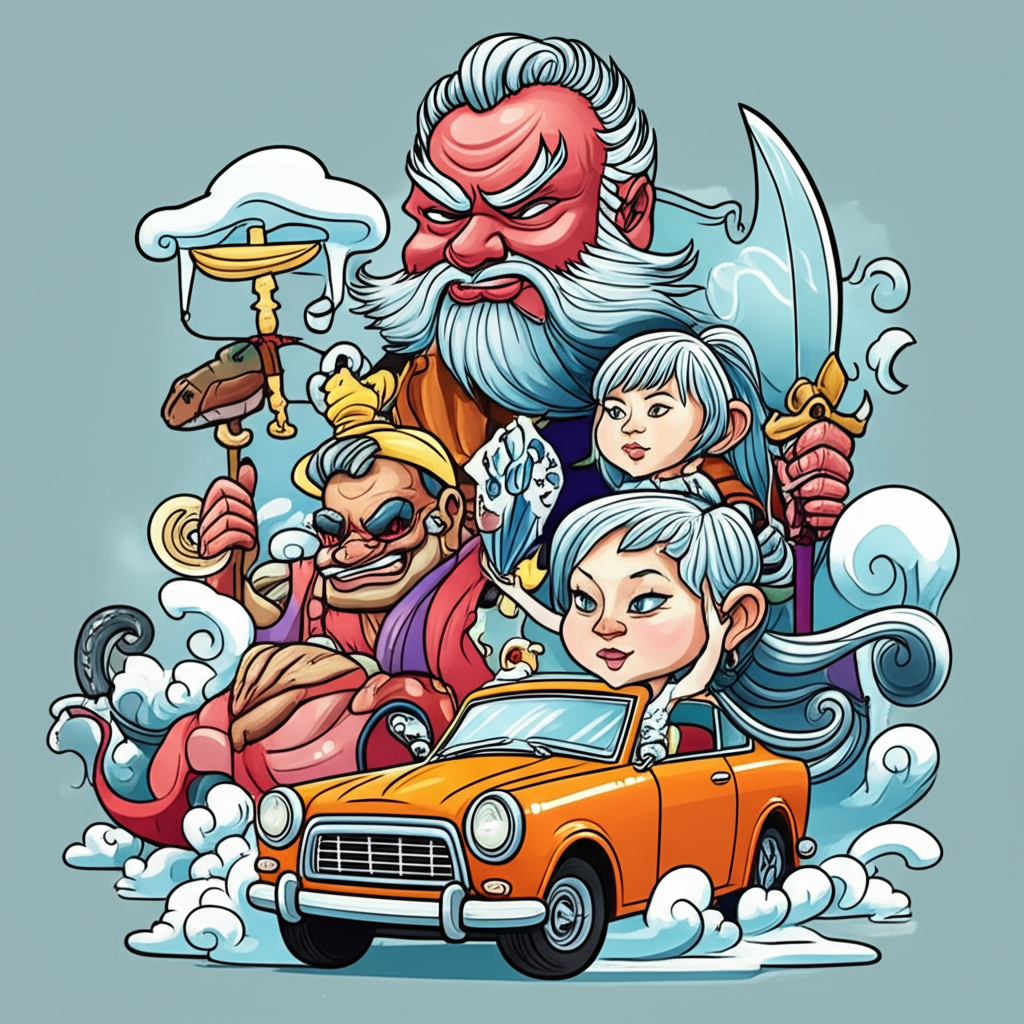
The towering, snow-capped silhouette of Mount Fuji has long been a focal point of Japan’s breathtaking landscape and a profound wellspring of its rich cultural tapestry. From its majestic presence, stories have emerged that have woven themselves into the very fabric of Japanese folklore. Among these tales, whispers of the oni, formidable beings often associated with this sacred mountain, have echoed through generations. These are not accounts of historical events, but rather traditional narratives, passed down by ancient people to explain the world around them, to embody their fears, and to ponder the powerful forces of nature.
The origins of these stories can be traced back to a time when Japan was a land deeply connected to the natural world. In eras past, before the advent of modern science and technology, the lives of people were intimately tied to the cycles of seasons, the unpredictability of weather, and the sheer, overwhelming power of their environment. Majestic natural phenomena, like the colossal eruption of a volcano or the relentless fury of a typhoon, were often attributed to forces beyond human comprehension. Mount Fuji itself, a volcano dormant for centuries but capable of immense destruction, was a prime candidate for such interpretations. The ancient Japanese viewed the world as a place teeming with spirits and unseen powers, where the boundaries between the physical and the spiritual were fluid. The kami, deities or spirits residing in nature, were revered, and their influence was believed to shape human destiny. Within this animistic worldview, it is understandable that potent and enigmatic beings like the oni would emerge from the shadowed valleys and mist-shrouded peaks of sacred mountains.
The oni themselves are figures of immense power and often terrifying appearance within Japanese folklore. They are typically depicted as hulking, brutish creatures, often with crimson or blue skin, sharp claws, and two or three horns protruding from their heads. Their mouths are frequently shown with tusks, and they are commonly armed with formidable iron clubs, known as kanabō. These attributes are not meant to suggest a literal existence, but rather to symbolize their raw, untamed strength and their association with primal forces. The horns, for instance, can be seen as representing their fierce, aggressive nature or their connection to the earth’s deep energies. Their formidable weapons speak to their capacity for destruction and their ability to exert dominance. The oni were not inherently "evil" in the Western sense, but rather embodiments of chaotic power, untamed nature, or primal human desires. They represented the destructive potential that lay dormant, much like the slumbering volcano itself.
One recurring narrative that illustrates the connection between oni and Mount Fuji speaks of their role as guardians or inhabitants of the mountain’s treacherous slopes and hidden caves. Imagine, if you will, a time when the air around Fuji was thick with an almost palpable sense of mystery. The ancient villagers, gazing up at its imposing form, would tell tales of these fearsome beings who dwelled in its upper reaches. They weren’t always portrayed as actively malicious, but rather as entities who commanded respect and instilled a healthy fear. The stories might describe how the oni controlled the mountain’s weather, their roars of anger manifesting as thunder, their fiery breath as volcanic tremors, and their tears as torrential rains that could swell rivers and flood valleys. Some legends would posit that the oni were tasked with protecting the mountain from those who sought to exploit its resources or disrespect its sacred nature. A group of greedy woodcutters venturing too deep into the forbidden forests might find themselves being chased by shadows, their tools vanishing, and disembodied laughter echoing through the trees – the work of the mountain’s unseen protectors. Or perhaps, during harsh winters, when blizzards descended with brutal force, the villagers would whisper that the oni were playing their games, their icy breath freezing the land and testing the resilience of those below. These narratives served to explain the mountain’s inherent dangers and to discourage reckless intrusion.
The symbolism embedded within these oni legends is multifaceted and deeply rooted in the ancient Japanese psyche. The oni could represent the raw, untamed power of nature, particularly the destructive potential of volcanoes and severe weather, which were beyond human control. Their presence on Mount Fuji, a volcano both revered and feared, made them a perfect manifestation of this duality. They could also embody the darker aspects of human nature – greed, anger, or destructive impulses. By projecting these negative traits onto mythical beings, people could externalize and confront their own inner turmoil. Furthermore, the oni could symbolize a form of primal justice or retribution, punishing those who transgressed natural or societal boundaries. Their guardianship of the mountain also speaks to the human need to understand and ascribe purpose to even the most formidable and seemingly indifferent aspects of their world.
In the modern era, the oni have transcended their origins as purely folkloric figures and have found a vibrant afterlife in various forms of popular culture. In Japanese literature, manga, and anime, they are often depicted with a wide spectrum of interpretations, from fearsome antagonists to complex anti-heroes or even misunderstood beings. Their striking visual appearance and potent symbolic power make them ideal characters for storytelling. Video games frequently feature oni as formidable enemies or even playable characters, drawing on their established mythology to create engaging gameplay experiences. Scholars of cultural studies examine these myths as invaluable windows into the historical worldview, anxieties, and values of past societies. The oni continue to capture the imagination, serving as a testament to the enduring power of storytelling.
It is crucial to reiterate that these narratives, while fascinating and culturally significant, are indeed traditional stories told by ancient people and do not represent factual accounts. As Muslims, we recognize that only Allah (God) is the true Creator and Sustainer of the universe, and that all power and dominion belong to Him alone. The existence of any being or force is solely by His will. Nevertheless, these tales of the oni of Mount Fuji offer us a unique opportunity to explore the rich tapestry of human cultural heritage. They highlight the remarkable capacity of the human mind to create meaning, to grapple with the unknown, and to express profound truths through the art of storytelling. By understanding these myths, we gain a deeper appreciation for the diverse ways in which humanity has sought to comprehend its place in the world and the enduring power of imagination to shape our understanding.





